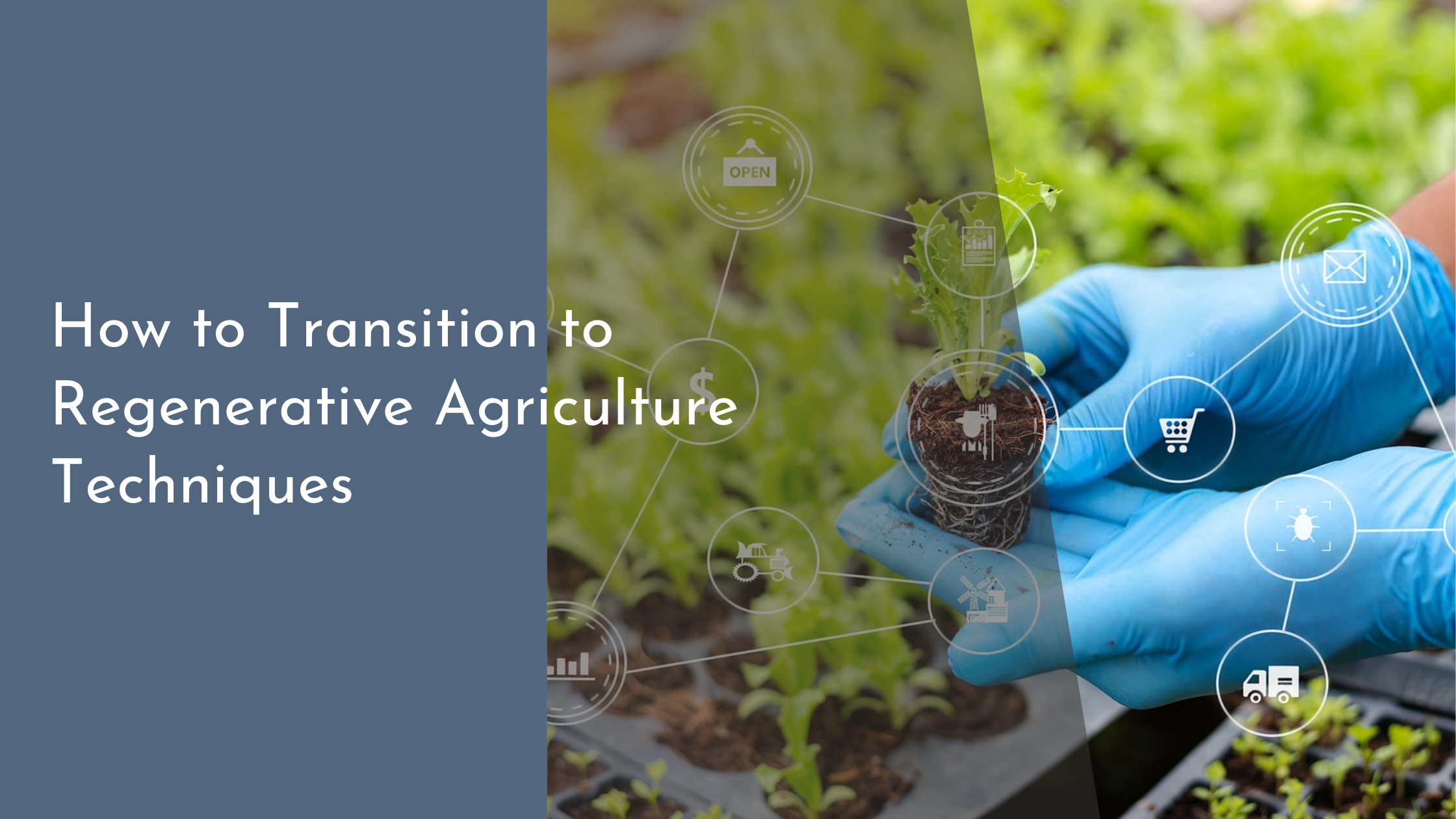How to Transition to Regenerative Agriculture Techniques
Transitioning to regenerative agriculture is an exciting journey towards creating a sustainable and resilient farming system. Unlike conventional agriculture, regenerative methods focus on enhancing the health of the soil, restoring biodiversity, and capturing carbon within the soil. This shift not only benefits the environment but also can lead to increased productivity and profitability for farmers. Let’s explore how you can successfully transition to regenerative agriculture techniques to foster a thriving ecosystem on your farm.
Understanding Regenerative Agriculture Basics
Regenerative agriculture is a holistic approach that emphasizes the restoration and enhancement of the entire ecosystem. At its core, it seeks to improve soil health through practices that increase organic matter, enhance biodiversity, and promote a closed-loop system. Techniques such as cover cropping, crop rotation, reduced tillage, and integrated livestock management are fundamental to this approach. By focusing on building soil health, farmers can improve water retention, reduce erosion, and create more resilient crops that are better equipped to withstand environmental stresses.
Additionally, regenerative agriculture is deeply rooted in the principles of ecological balance and carbon sequestration. By fostering biodiversity and minimizing chemical inputs, this approach not only benefits the environment but also enhances the farm’s long-term productivity. Transitioning to regenerative practices requires a shift in mindset, seeing the farm as a living ecosystem rather than a mere production unit. Embracing this perspective allows farmers to harness the natural synergies within their land, leading to healthier crops and a more sustainable future.
Preparing Your Land for Transition
When preparing your land for a transition to regenerative agriculture, it’s essential to start with a comprehensive soil assessment. Understanding the current state of your soil will help you identify areas in need of improvement and inform your choice of practices. Conduct soil tests to measure organic matter content, pH levels, and nutrient availability. This data will serve as a baseline to monitor progress over time and tailor your approach to the specific needs of your land.
Once you have a clear understanding of your soil’s condition, the next step is to enhance its structure and fertility. Begin by introducing cover crops to protect the soil from erosion, improve nutrient cycling, and boost organic matter. Incorporating legumes can fix atmospheric nitrogen, reducing the need for synthetic fertilizers. Additionally, consider implementing a no-till or reduced-till system to preserve soil structure and minimize disturbance. These foundational steps will set the stage for a successful transition to regenerative practices.
Selecting the Right Techniques for Your Farm
Choosing the right regenerative techniques for your farm involves evaluating a variety of factors, including your climate, soil type, and crop needs. Start by exploring cover cropping options that can provide multiple benefits, such as improving soil health, suppressing weeds, and enhancing biodiversity. Diverse cover crop mixes can offer a range of ecological services, helping to create a balanced and resilient system tailored to your land.
Another important consideration is integrating livestock into your farming system. Managed grazing can lead to improved pasture health, increased soil organic matter, and better nutrient cycling. Livestock can also help control weeds and aid in the breakdown of crop residues, adding valuable nutrients back into the soil. These practices can be adapted to fit different farm sizes and types, making it crucial to choose strategies that align with your specific goals and resources.
Implementing and Monitoring Your Progress
Once you’ve selected the techniques that best suit your farm, it’s time to implement these strategies and monitor their impact. Begin with small, manageable changes to ensure a smooth transition and allow for adjustments along the way. As you incorporate regenerative practices, keep detailed records of inputs, crop yields, and soil health indicators. Regular monitoring will enable you to assess the effectiveness of your strategies and make data-driven decisions to refine your approach.
Monitoring progress is not just about tracking metrics but also involves observing the subtle changes in your farm’s ecosystem. Look for signs of increased biodiversity, improved soil structure, and healthier plants. Over time, you should notice a reduction in pest pressures and a more resilient system overall. Celebrate these successes and be open to learning from challenges, as each season offers new insights and opportunities for growth.
Transitioning to regenerative agriculture is a rewarding journey that goes beyond improving soil health—it revitalizes the entire farm ecosystem. By adopting these sustainable practices, farmers can create resilient landscapes that nurture both the environment and their communities. As you embark on this transformative path, remember that every small step contributes to a more sustainable future. Embrace the learning process, celebrate the gains, and enjoy the abundance that regenerative agriculture can bring to your farm.

